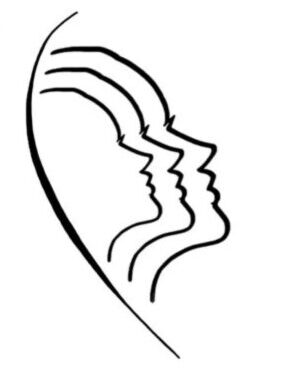Plagiocephaly
Skull and facial asymmetry. At the front, asymmetry is caused by the premature fusion of the coronal suture on one side of the skull. At the back of the skull, occipital asymmetry is caused by a prematurely fused lambdoid suture.
Trigonocephaly
Wedge-shaped head. A bony ridge at the front of the head that gives it a wedge shape. This is caused by premature fusion of the metopic suture.
Scaphocephaly
Boat-shaped head. This is one of the more common skull deformities. It is caused by the early closure of the fontanelle and premature fusion of the sagittal suture.
Brachycephaly
Wide-shaped head. This skull deformity results when both coronal sutures fuse prematurely.
Malposition of the Orbits
The orbit is the bony area surrounding the eyeball. The eye grows for the first two years of life, causing the orbit to expand. Abnormal growth of the skull can also cause displacement of the orbit.
Hypertelorism
Increased distance between the eyes. This deformity may result from an encephalocele, Apert syndrome or other craniofacial problem. When the eyes are positioned too close together, it is known as hypotelorism.
Orbital Encephalocele
When brain tissue herniates or pushes through a skull defect at the orbits. This can be caused by abnormal skull growth.
Asymmetry of Orbits
Unequal height. This can be due to craniofacial microsomia or unilateral plagiocephaly.
Facial Asymmetry
Facial asymmetry, a noticeable difference in features from one side of the face to the other, is one of the more common craniofacial birth defects.
The unilateral form of hemifacial microsomia, a deformity of the ear and lower jaw, is the second most common craniofacial birth defect after cleft lip and palate.
Different facial structures may be involved from patient to patient. Seen less commonly is hemifacial atrophy, where the soft tissues on one side of the face slowly waste away.
Hemifacial hypertrophy is characterized by an enlargement of one side of the face. Other parts of the body on the affected side may also be involved.
Treacher Collins Syndrome
The skull is generally normal, but the ridges over the eyes may be underdeveloped. The cheekbones are underdeveloped or missing completely. Eyelids slope downward and ears are often abnormal in shape with impaired hearing present. The lower jaw is small and angles down, contributing to an open bite.
